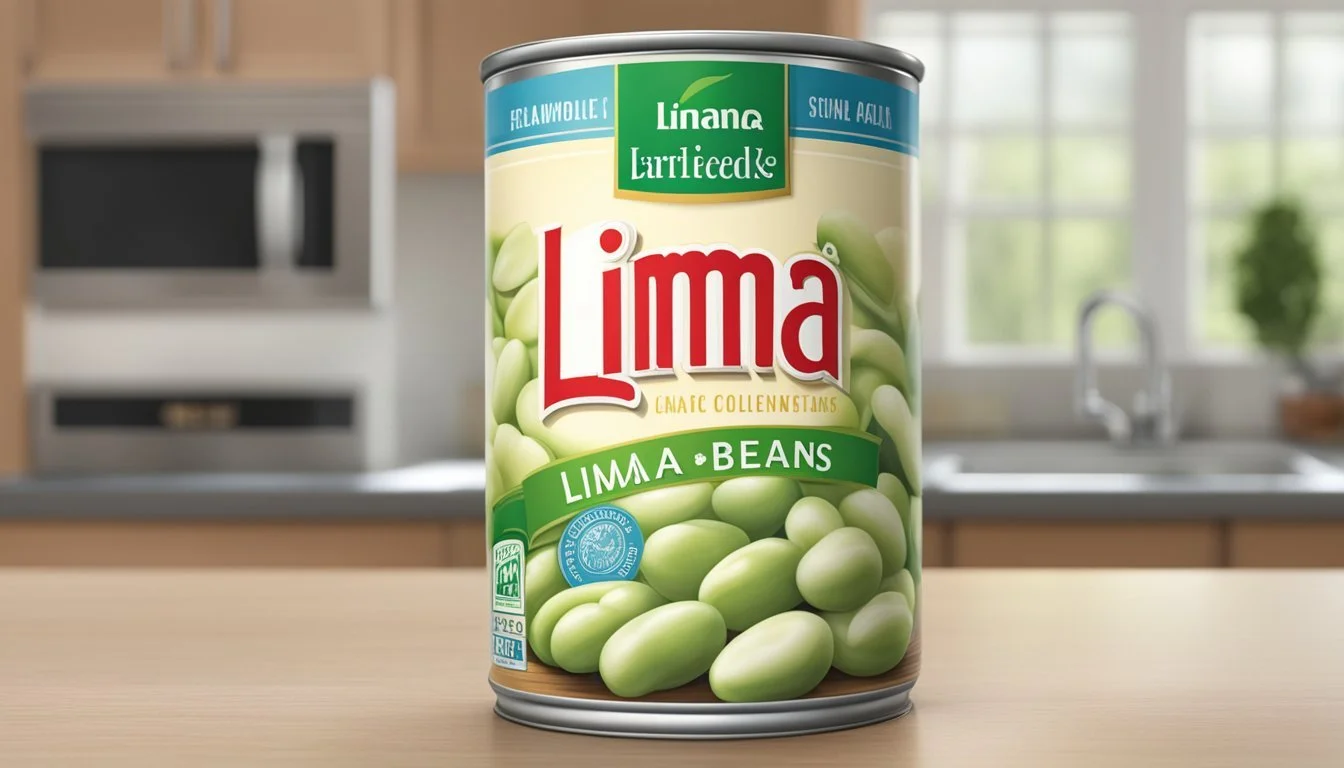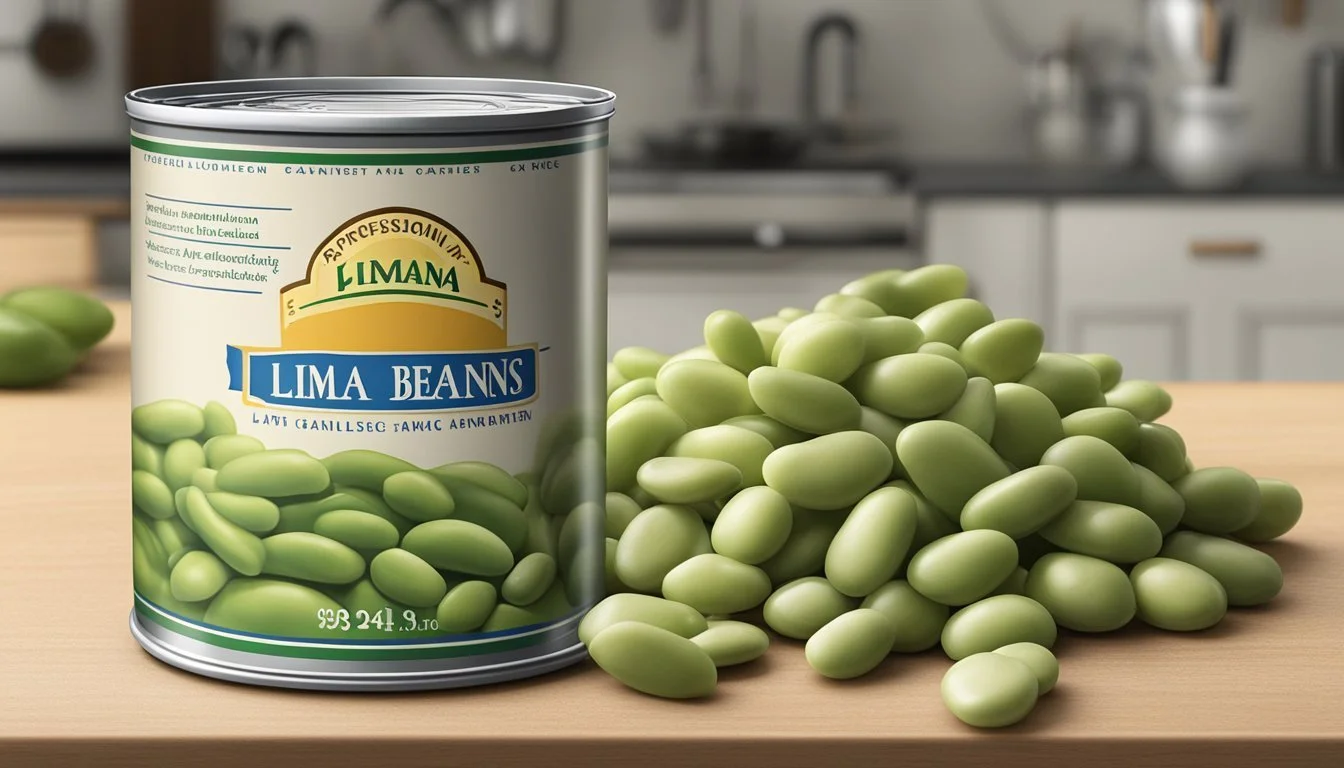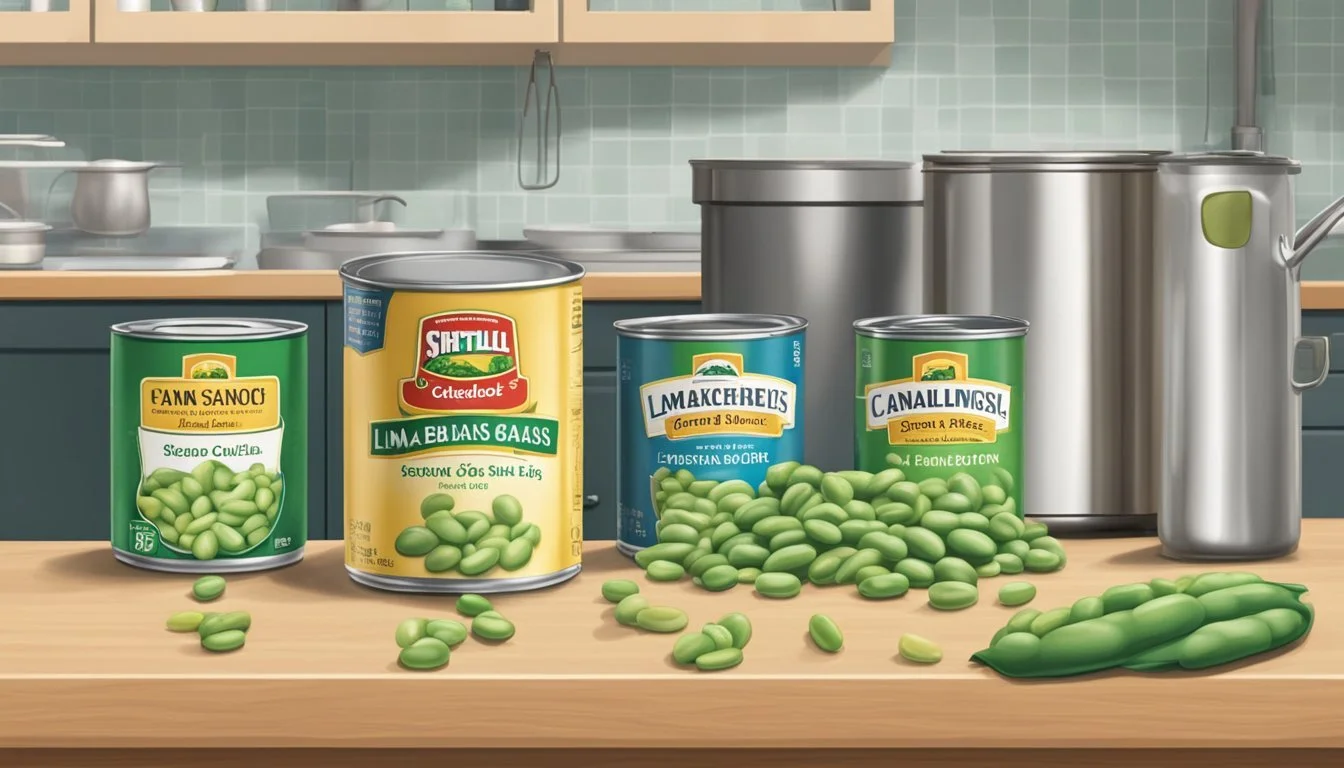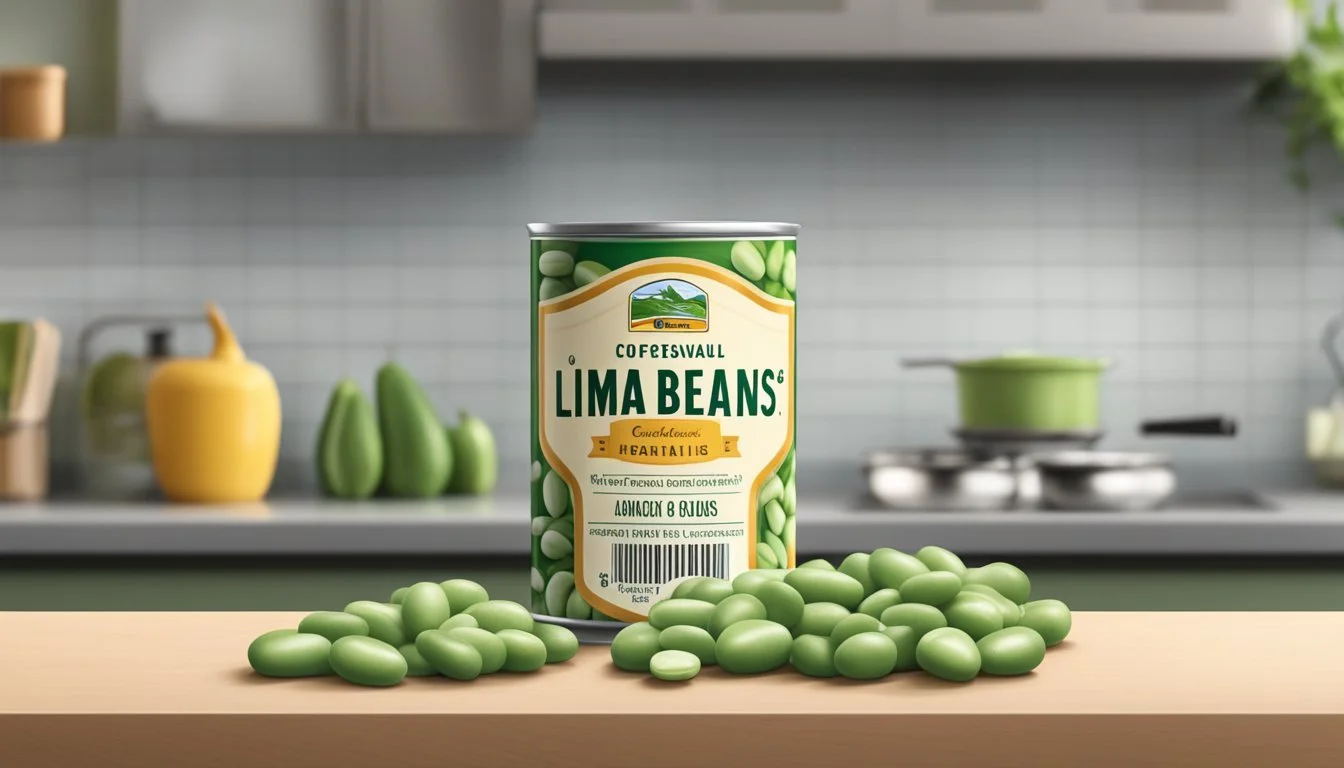How Many Ounces in a Can of Lima Beans?
Understanding Can Sizes and Measurements
Lima beans, often found canned in grocery stores, are a convenient and nutritious option for many recipes. Representing a staple in the pantry, these beans provide a hearty addition to meals, serving as an excellent source of fiber, protein, and other essential nutrients. When it comes to understanding the quantity of lima beans in a can, it's useful to discuss the measurement in ounces, which is a standard unit for weight in the United States.
A typical can of lima beans contains about 15 ounces by weight. However, once drained of their packing liquid, the beans themselves weigh around 9 to 10 ounces. In terms of volume, a drained can of lima beans usually equates to approximately 1 to 1 1/2 cups. This knowledge proves beneficial when following recipes that may call for beans in cup measurements rather than ounces, aiding in precise ingredient substitutions and ensuring the integrity of dishes.
Understanding Lima Beans
Lima beans are not only a versatile ingredient for home cooks, but they also offer a wealth of nutrition, including protein, fiber, and essential vitamins and minerals.
Varieties of Beans
There are multiple varieties of legumes commonly used in cuisines worldwide. Lima beans are distinct with their flat, cream-colored appearance but share the stage with other beans like kidney beans, chickpeas, soybeans, adzuki beans, black beans, great northern beans, mung beans, navy beans, and pinto beans. Each bean has its unique size, color, texture, and flavor profile.
Nutritional Profile
Lima beans are particularly nutritious, providing a significant amount of protein, fiber, iron, potassium, and magnesium. They also contain various vitamins, including Vitamin C. Their low-fat content and beneficial nutrients make them a heart-healthy choice.
Culinary Uses
Lima beans can be used in a variety of recipes from bean salads and soups to stews and side dishes. They are also popular in chili recipes. Their mild flavor allows them to absorb other flavors well, making them a versatile ingredient for many dishes.
Lima Beans vs. Other Beans
Compared to kidney beans and black beans, lima beans tend to have a softer texture when cooked. Chickpeas and soybeans have a firmer texture and nuttier flavor, while lima beans are milder. When used in soups or stews, lima beans contribute a creaminess without overpowering other ingredients.
Lima Bean Preparation Tips
Before cooking, lima beans should be thoroughly rinsed to remove any debris. Soaking is recommended to reduce cooking time; they can be soaked overnight or through a quick method using boiling water. When boiling the beans, start with a 1:2 ratio of beans to liquid and adjust to your preference.
Health Benefits and Considerations
Lima beans offer health benefits including helping to regulate blood sugar levels due to their high fiber content. They also provide vital nutrients that contribute to overall health. However, like other beans, they contain antinutrients which can be reduced through proper soaking and cooking. Offering both low-sodium and no-salt-added varieties, they are suitable for a variety of dietary needs.
In summary, lima beans are a nutritious and adaptable food choice for a variety of culinary applications, loaded with beneficial nutrients while providing a canvas for a spectrum of flavors and textures.
Can Sizes and Measurements
When selecting canned lima beans, it's essential to understand the various can sizes available and how they relate to weight and volume. This knowledge is especially crucial when following recipes that specify certain quantities or when substituting different types of beans.
Standard Can Sizes
Beans come in several standard can sizes, commonly referenced by numbers or measurements. Common sizes for lima beans include:
No. 300 can: About 1 ¾ cups, 14 to 16 ounces
No. 303 can: Approximately 2 cups, 15 to 17 ounces
No. 2 can: Typically 2 ½ cups or around 20 ounces
Converting Weight to Volume
Conversions from weight to volume can be a bit tricky due to the different densities of contents. However, a 15-ounce can of lima beans typically translates to roughly:
15 ounces (weight) = 1 ¾ to 2 cups (volume)
Measuring Lima Beans
Canned, cooked, and dried beans each require different measurements for culinary use:
1 15-ounce can of beans = 1 ¾ to 2 cups cooked beans
1/2 cup dried beans (after cooking) ≈ 1 15-ounce can
Lima Beans in Recipes
Cooked lima beans are typically called for by volume (cups) in recipes, and one should consider:
1 15-ounce can yields roughly 1 ¾ to 2 cups of cooked lima beans
Always drain and rinse canned beans to improve texture and flavor and remove excess sodium, unless the recipe states otherwise.
Reading Can Labels
Labels on cans of lima beans provide crucial information like net weight and volume, often in ounces and grams. Look for labels indicating no-salt-added varieties for health-conscious preparations. It's important to store cans in a cool, dry place and they can generally be kept frozen once opened if not immediately used.
Substituting Different Bean Types
If a recipe calls for lima beans but you only have another variety, keep in mind that:
Substitute by volume (e.g., 1 cup lima = 1 cup kidney beans)
Texture and flavor profiles vary, altering the dish's characteristics
Dry beans expand after soaking and cooking, so start with 1/3 the amount of dry beans by volume to yield the equivalent amount as canned
Remember that consistent storage conditions will preserve the quality of canned lima beans, ensuring they contribute effectively to your cooking endeavors.
Cooking and Storage Tips
Understanding the nuances between cooking with canned versus dried lima beans, as well as proper storage methods, can greatly influence both the flavor and the nutritional value of your dishes. These tips also ensure the legumes are used to their full potential.
Cooking with Canned vs. Dried Lima Beans
Canned lima beans weigh generally around 15 ounces per can and are pre-cooked, thus they only require reheating. Conversely, dried lima beans need soaking—either overnight or using a quick soak method—for at least 1 hour before cooking, which typically takes about 1 to 1.5 hours. Be sure to rinse and drain dried beans prior to cooking to eliminate impurities.
Proper Storage Methods
Store unopened canned lima beans in a cool, dry place away from light which can extend their shelf life to 2-5 years. After opening, refrigerate leftover canned beans in a covered glass or plastic container and use within 3-4 days. Dried beans should also be kept in a cool, dry place in an airtight container for up to 2 years.
Effects of Cooking on Nutrient Content
Cooking, whether starting with canned or dried beans, can affect their nutrient content. Lima beans are a good source of protein, fiber, essential vitamins like vitamin C, and minerals like iron, magnesium, and potassium. Overcooking can result in nutrient loss, especially for vitamin C, hence it is best to cook lima beans until just tender.
Incorporating Lima Beans into Dishes
Lima beans can enhance recipes offering a mild flavor and creamy texture. They can be a nutritious addition to soups, salads, stews, or as a side dish. To integrate into dishes, canned beans can be added directly while dried beans need to be soaked and cooked beforehand.
Managing Leftovers
When dealing with leftover lima beans, ensure they have cooled down before storing to prevent bacterial growth. Covered, they can be refrigerated and incorporated into other recipes within a couple of days.
Freezing and Defrosting Tips
Freeze both canned and cooked dried beans by spreading them on a baking sheet to freeze individually before transferring to a freezer bag. This prevents clumping and makes it easier to use the desired amount later. Defrost in the refrigerator or gently warm them in a pot over low heat.
Troubleshooting Common Cooking Issues
A common issue when cooking dried lima beans is hardness or inconsistent texture. To avoid this, make sure the beans are fresh and soak them adequately. When beans end up too soft, reduce the cooking time or the amount of water for future batches. Adjust seasoning post-cooking to preserve flavor and prevent the beans from becoming mushy.
Supplemental Information
This section provides a detailed overview of various aspects relating to lima beans, from cost effectiveness and nutritional value to food safety and recipe innovation.
Cost Comparison: Canned vs. Dried Beans
Comparing costs, dried beans typically offer more servings per bag than the equivalent number of canned beans and are more cost-effective. Cans often contain about 15 ounces of beans, while a 1-pound bag of dried beans yields about 6 cups after cooking. However, dried beans require longer preparation including soaking and cooking time.
Lima Bean FAQs
Lima beans are a nutritious part of a balanced diet, rich in fiber, protein, vitamins, and minerals. They can be bought in cans or as dried beans and stored in a cool, dry place. When properly stored, canned beans have a shelf life of 2 to 5 years, while dried beans can last up to 10 years.
Creative Lima Bean Recipes
Lima beans can be included in a variety of recipes, from bean salads to chili and soups. They are a versatile legume and can be mashed as a spread, pureed into soups, or mixed into a savory bean salad.
Impact of Lima Beans on Diet and Health
Incorporating lima beans into one's diet adds a nutritious boost of essential nutrients such as potassium, iron, and magnesium. Regular consumption can aid in maintaining a healthy weight, stabilizing blood sugar, and providing satiety due to the high fiber and protein content.
Food Safety and Lima Beans
Canned lima beans should be rinsed before use to reduce sodium and antinutrients. It’s essential to ensure the integrity of the can and lid to avoid contamination. Dried beans should be checked for any debris and kept in airtight containers after soaking and cooking to maintain safety.
Alternative Sources of Similar Nutrients
Other legumes such as lentils, chickpeas, soybeans, and kidney beans can be good alternatives, offering similar profiles in minerals, vitamins, and protein. They can be used interchangeably in recipes and are suitable for a variety of cooking methods.






